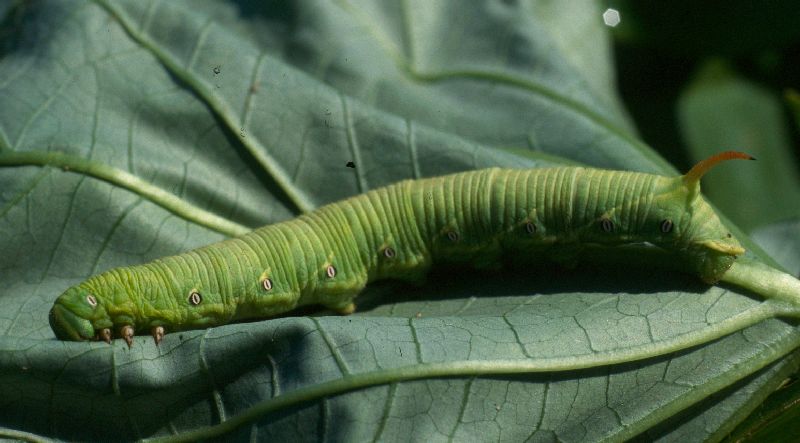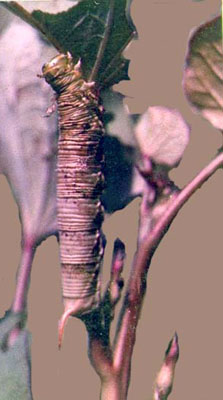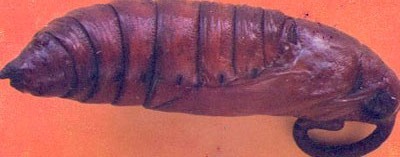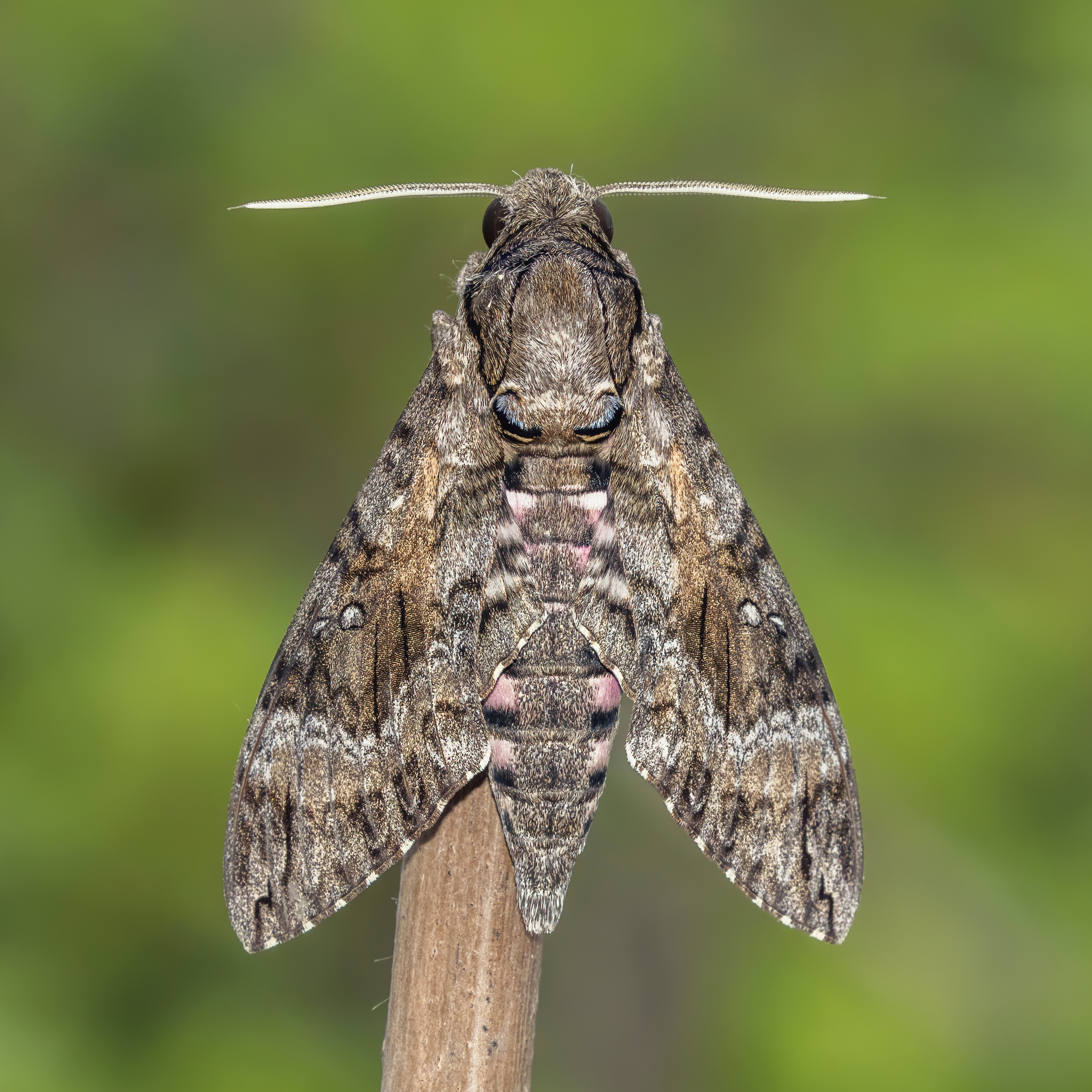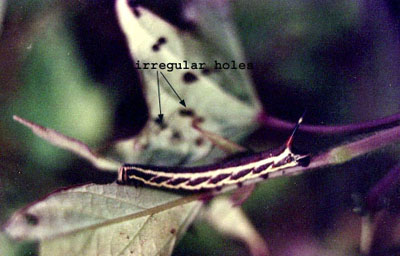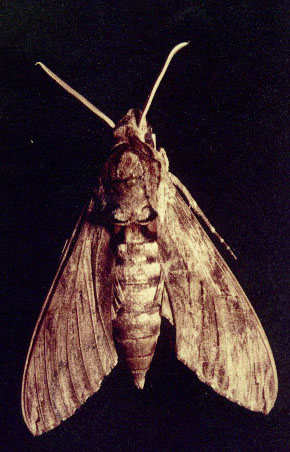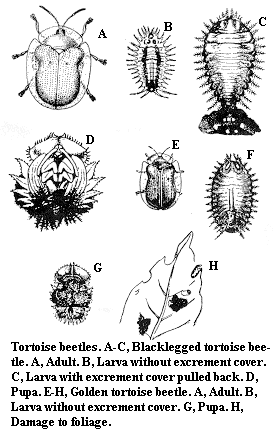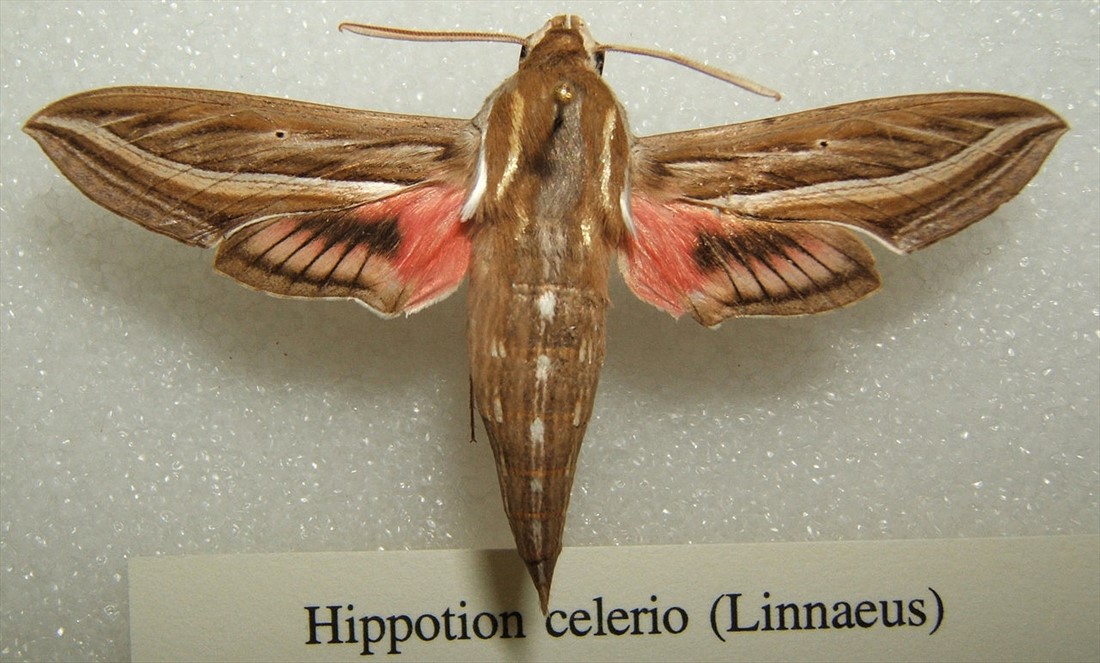sweet potato hornworm life cycle
Pupation occurs in the soil and adults emerge 2 to 4 weeks later to lay second generation eggs. In Missouri there may be one or two generations depending on location.

Are They Sweet Potato Hornworm Moths
As they do time they also deposit tiny eggs on the foliage of young tender vegetable plants.
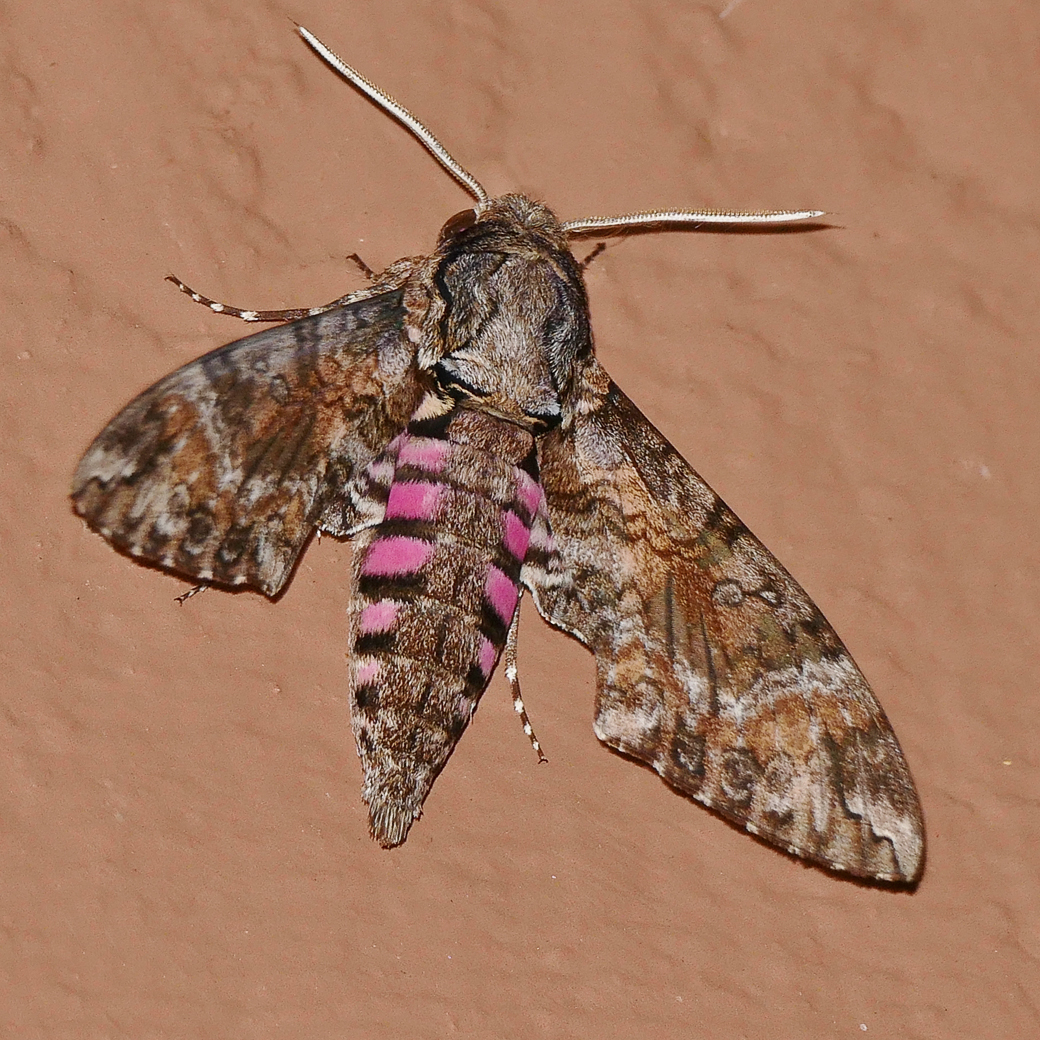
. Pupae are reddish-brown in colour and pupation takes place in soil. There is one generation per year in northern areas. The adult tomato hornworm is known as the five-spotted hawk moth while the adult tobacco hornworm is called the Carolina sphinx.
Caterpillars feed voraciously on leaves and defoliate the vines. I could not find much about the life cycle of the Tomato Hornworm so I did a little research an. Larvae feed on plants in the Convolvulaceae family especially Ipomoea batatas sweet potato and in the Solanaceae family especially Datura.
A few days later eggs hatch. Sweet potato weevil Cylas formicarius Fabricius Coleoptera. About 30 days Life cycle.
Both tomato and tobacco hornworms have the same life cycle egg larva pupa and adult and both can have either one or two generations per year in Utah. Maybe a plant you dont care as much about. 5-12 days Ist inst.
Life cycle of tomato hornwormsTomato hornworms feed on the leaves and fruit of tomatoes and other vegetables including eggplant potatoes and peppersThey can quickly defoliate portions of the plant reduce its productivity and heavily scar the fruit. During summer the entire life cycle is often completed in 30 days. 35 40 days in summer 5 8 generations a year 75- 90 eggsfemale Egg.
The moths are magnificently large creatures and are incredibly adept at flying. Found this Hornworm on our patio this morning after a thunderstorm last night. I also have a garden devoted to many native plants.
A hornworm will go from a tiny just-hatched half-inch worm to a 4-inch long bulging creature in just 48 hours. They overwinter in their pupal state in the soil but if the weather is warm enough the larvae may only burrow for only 2. Ever wondered where the Tomato Hornworm came from.
Caterpillar larvae hatch in late spring and feed for 46 weeks before creating a cocoon. Newly emerged grubs feed for about 3 weeks before pupating in the soil. The hornworms overwinter in the ground as pupae.
These wasps deposit their eggs inside the hornworms body and the larval wasps develop within the caterpillar feeding on it as they progress through their life cycle. They are commonly referred to as sphinx hawk or hummingbird moths. And if left to be they will ruin a plant in less than a week.
The tomato hornworm eggs are spherical and are whitish to light green in color. This is a Hornworm in the family Sphingidae and we believe it is the caterpillar of a Pink Spotted Hawkmoth Agrias cingulata also known as the Sweet Potato Hornworm. The adults are large moths predominately gray or gray-brown with lighter markings.
A complete life cycle occupies 4 to 5 weeks. They resume activity in spring and begin to deposit eggs in soil near host plants. When pupation takes place the immature wasps spin small white silken cocoons that protrude from the body of the still-living caterpillar Figure 12 Crockett et al.
You will easily recognize these adults during this season more than others. The tomato hornworm life cycle begins as the overwintering adults crawl out of the garden soil starting in late spring or early summer. The number of generations is reported to be at least two in North Carolina and probably more in Gulf Coast states.
Individuals can grow to 1075 mm. This adult stage usually lasts 2 to 3 weeks. August 2014 Plano Texas.
They visit flowers of papaya morning-glory papaya and Prickly Pears. I do have container tomato plants nearby but havent seen a brown hornworm before. Those are the eggs of a predatory insect the braconid wasp.
Larvae feed on the foliage for about three weeks and then they burrow into the soil where they pupate. According to the Sphingidae of the Americas website. The cocoon-covered hornworms are a sight.
Sweet potato hornworm moths are present from June to September. The biology of this insect is not well documented. Incubation larval and pupal stages last for 5-10 14-21 7-11 days respectively.
The larvae hatch a week later and feed on foliage and fruit for three to four weeks until reaching full development. In mid-spring adults emerge and mate. The eggs are deposited singly on the underside of the foliage.
Once they emerge they feed on the nectar of flowering plants. This is a good guy a beneficial insect and if you kill the hornworm you kill the wasp eggs and the wasp babies that will hatch and eat the worm. Sweet Potato Hornworm.
Several generations per year are possible. These moths then mate and lay eggs on the underside of the leaves of your vegetable plants. Eggs are laid singly on the lower surface of leaves.
Tomato Hornworm Horticulture and Home Pest News new hortnewsextensioniastateedu. Hornworms begin their life cycle as a moth emerging from a pupa state in the ground in early spring. Life Cycle and Description.
The hornworm will continue eating however so you may decide to move it to a better location. They are nearly spherical in shape whitish or greenish and measure about 135 mm in diameter. 8-16 2nd inst12-21 3rd inst15-26.
Agrius cingulata Sweet Potato Hornworm Pink Spotted Hawkmoth is a species of Lepidoptera in the family sphinx moths. Sweet Potato Hornworm Pink Spotted Hawkmoth. They are active at night.
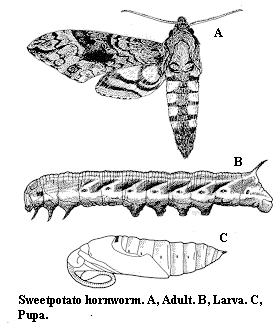
Pests Of Sweetpotato Nc State Extension Publications

Braconid Wasp Cotesia Congregata On Tomato Hornworm Manduca Quinquemaculata 5606094

Sweet Potato Hornworm Pink Spotted Hawkmoth Encyclopedia Of Life
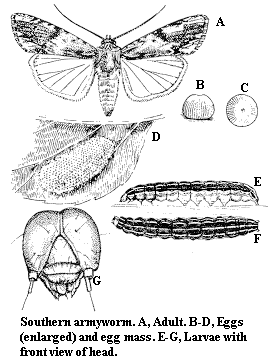
Pests Of Sweetpotato Nc State Extension Publications
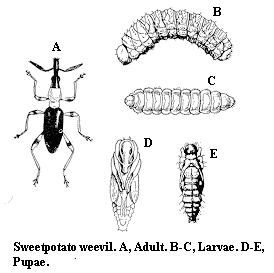
Pests Of Sweetpotato Nc State Extension Publications
Cabbage Broccoli Other Cole Crop Insect Pests Home Garden Information Center

Fact Sheet Sweetpotato Hornworm 027

Hornworm An Overview Sciencedirect Topics
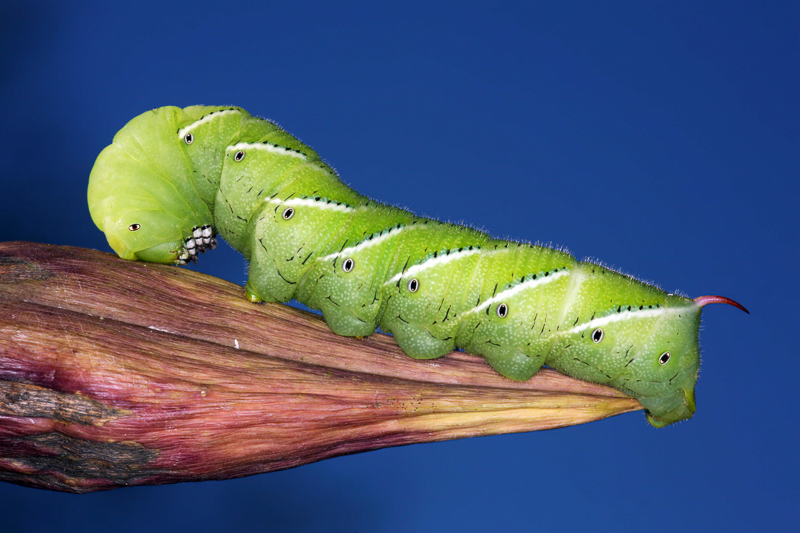
Hornworm Definition And Synonyms Of Hornworm In The English Dictionary
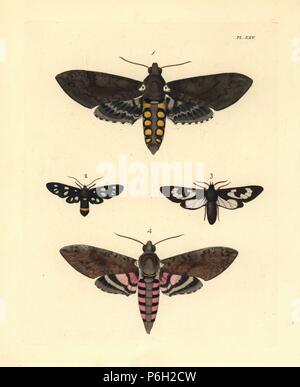
Pink Spotted Hawkmoth Agrius Cingulata Dorsal View In Houston Tx On Stone Background Neotropical Insect Destructive To Sweet Potato Crops Stock Photo Alamy
